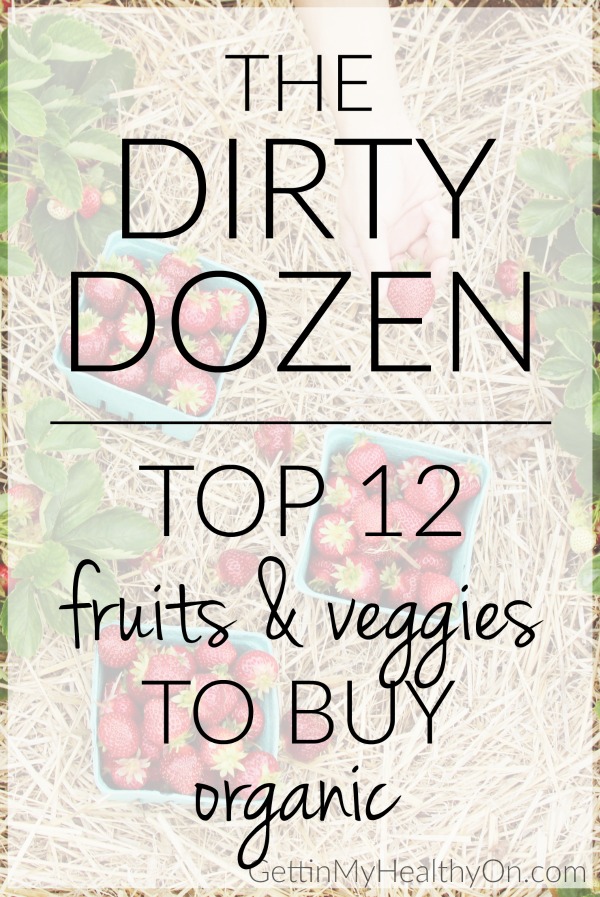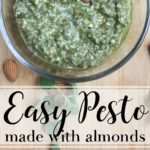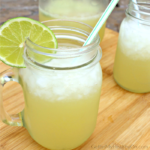Do you buy organic produce? Or do you more so just not worry about it but once in awhile wonder if you should worry about it?
The latter is my life. I don’t usually go for organic foods because I just want to live my life without stressing about it—plus, the debate of buying organic vs. not can be overwhelming. And that brings me to today’s post.

I’ve known about “The Dirty Dozen” for years, thinking how it would be great if I followed it…yet continuing to not. There are certain fruits and vegetables I occasionally buy organic, though, just because I’ve heard they tend to be dirtier, AKA they hold onto more pesticides than other produce.
To help anyone else who’s confused about which foods to buy organic, I’m talking about the 12 foods that you may want to consider buying organic, in case you don’t have the funds, motivation, or interest for buying all things organic all the time. First things first…
What Is the Dirty Dozen?
To put it simply, the dirty dozen is composed of the top 12 fruits and vegetables that have tested as having the most pesticide residue. This list is put together each year by the Environmental Working Group (EWG) based on tests from the U.S. Department of Agriculture that look at which produce is the most contaminated from pesticide residue. The EWG’s 2017 Dirty Dozen list includes the following:
- Strawberries
- Spinach
- Nectarines
- Apples
- Peaches
- Pears
- Cherries
- Grapes
- Celery
- Tomatoes
- Sweet Bell Peppers
- Potatoes
As you can see, strawberries are considered the most contaminated by pesticides, according to the EWG. And if you’re curious, here’s the other side of things: the Clean Fifteen. The EWG highlights the following 15 produce items as being the least contaminated: sweet corn, avocados, pineapples, cabbage, onions, frozen sweet peas, papayas, asparagus, mangoes, eggplant, honeydew, kiwi, cantaloupe, cauliflower, and grapefruit.
Worth noting: there are limitations to the Dirty Dozen so it may not be the end-all-be-all for selecting produce. However, I think it’s a great starting point for prioritizing organic foods.
So What’s the Point of Pesticides? If you check out why the EPA uses pesticides, you’ll learn that pesticides are chemicals used to keep pests, insects, and diseases under control. Unfortunately, they’ve gotten a bad rap because you know…sometimes chemicals aren’t great to consume. So although I appreciate the bad that’s kept at bay thanks to science, I’m also intrigued by organic farming.
What Makes Food Organic? According to the Mayo Clinic’s discussion about organic farming, “organic” refers to the way fruits, vegetables, grains, dairy, and meat are grown and processed. It’s designed to improve the quality of the environment in which the food grows, reduce pollution, and create more of a self-sustainable system. Because of this, organic produce has fewer pesticides (fun fact: organic farming can still use certain pesticides), is often fresher (since there aren’t preservatives to store it for longer), is GMO-free, and is considered better for the environment.
The USDA has a certification process in place for organic food to ensure they’ve been grown and processed according to government regulations. If you see products with the USDA seal of approval, that means the food is at least 95% organic.
There’s so much back and forth of whether it’s better to buy organic or if it’s a waste of time. I encourage you to look into the debate and check out for yourself what credible sources have to say about organic foods vs. traditionally produced foods.
Whether you use the “Dirty Dozen” as a guide for your organic food buying or not, at the very least, it can help to buy produce in season. Doing so often means the fruits/veggies are grown in a more natural process since they’re thriving under the current conditions.
Do you regularly buy organic versions of food? Why or why not?




